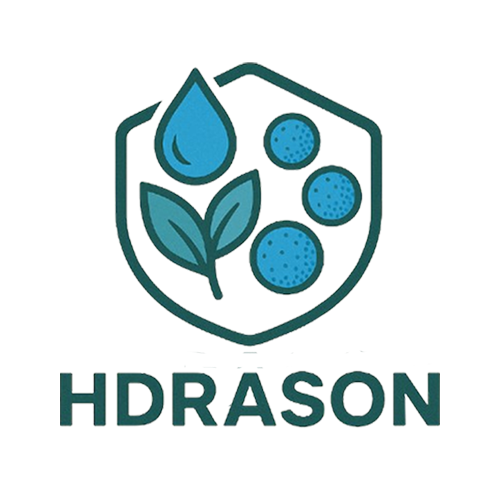
Are gel blaster bullets toxic to animals?
Share
For pet owners and outdoor enthusiasts who love gel blasters, a critical question lingers: Are these squishy projectiles safe for the animals in our lives? Whether it’s a curious dog snatching a stray bead, a backyard bird pecking at dried pellets, or a wild squirrel investigating leftover ammo, the risk of animal exposure is real. But “toxicity” is only part of the story—gel blaster bullets pose unique risks that go beyond chemical harm. This blog breaks down the science of gel bullet composition, their impact on different animals, and how to keep furry (and feathered) friends safe.
1. First: What Makes Gel Blaster Bullets “Non-Toxic”—and When They Might Not Be
To answer the “toxicity” question, we start with the core material of gel blaster bullets: superabsorbent polymers (SAPs).
The Safe Foundation: Food-Grade SAPs
Nearly all reputable gel bullet brands (e.g., Hdrason, Valken) use sodium polyacrylate—a FDA-approved, food-grade polymer common in baby diapers, pet pee pads, and even gardening soil (to retain moisture). This SAP is inherently non-toxic to animals: it doesn’t leach harmful chemicals when ingested, and it passes through most digestive systems without breaking down into toxins.
Veterinary studies on SAP exposure (from pet products) confirm this: when small amounts are eaten, the polymer doesn’t irritate the gut lining or release toxic byproducts. For example, if a cat licks a dried gel bead off the floor, the SAP itself won’t poison it.
The Hidden Risk: Additives in Low-Quality Bullets
The danger lies not in the SAP itself, but in additives used in cheap, unbranded gel bullets. Some manufacturers cut corners by adding:
- Dyes: Neon or “glow-in-the-dark” beads may use industrial dyes that stain animal fur/feathers and cause mild gut irritation if ingested.
- Preservatives: Low-quality beads sometimes include formaldehyde-based preservatives to extend shelf life—these can trigger vomiting or diarrhea in small animals.
- Fillers: Talc or starch fillers (used to reduce cost) can clump in an animal’s intestines, worsening physical blockages (more on this later).
To avoid toxic additives: Always buy beads labeled “non-toxic,” “food-grade SAP,” or from brands that list ingredients publicly. Avoid unbranded packs with strong chemical smells—this is a red flag for harmful additives.

2. More Dangerous Than Toxicity: Physical Risks to Animals
For most animals, physical harm is far more likely than poisoning from gel blaster bullets. The water-absorbing properties of SAP create two serious risks: suffocation and digestive tract obstruction.
Risk 1: Choking (Immediate Danger for Small Animals)
Dry gel bullets are tiny (2–3mm)—perfect for slipping into a small animal’s mouth. Birds, hamsters, rabbits, or toy-breed dogs (e.g., Chihuahuas, Yorkies) are at the highest risk:
- A dry bead can lodge in a bird’s trachea, cutting off airflow in seconds.
- Puppies often chew on dry beads, which can get stuck in their narrow throats before they even swallow.
Even soaked beads (7–10mm) pose a choking risk for small animals. A guinea pig, for example, may try to bite a soaked bead, which can compress and block its windpipe.
Risk 2: Intestinal Blockages (Slow, Life-Threatening)
The biggest danger comes when an animal swallows a gel bullet—especially a dry one. Here’s why:
When a dry SAP bead is swallowed, it encounters moisture in the stomach and intestines and begins to expand. A 2mm dry bead can swell to 10mm inside the gut—too large to pass through the narrow sections of the digestive tract (e.g., the small intestine’s ileum).
This creates a blockage, which prevents food and waste from moving through. Symptoms usually appear 12–24 hours after ingestion and include:
- Vomiting (especially after eating)
- Lethargy or loss of appetite
- Constipation or diarrhea (with blood, in severe cases)
- Abdominal pain (animals may hunch, whimper, or avoid being touched)
Without veterinary treatment, blockages can lead to organ failure or death within 48–72 hours. Even soaked beads can cause blockages if multiple are eaten—for example, a dog that sniffs up 5–10 soaked beads may develop a clump in its stomach.
3. How Risk Varies by Animal Type
Not all animals face the same level of danger. Size, behavior, and digestive systems determine vulnerability:
Dogs & Cats (Common Household Pets)
- Small breeds/puppies/kittens: Highest risk of choking and blockages. A 3-month-old puppy may mistake dry beads for kibble; a cat may bat at soaked beads and swallow them.
- Large breeds: Less likely to choke, but still at risk of blockages if they eat handfuls of beads (e.g., raiding a storage container).
- Behavioral note: Dogs with “pica” (a craving for non-food items) are especially prone to ingesting gel bullets—these pets need extra supervision.
Birds (Backyard or Caged)
Birds are the most vulnerable:
- Their small beaks and trachea make choking on dry beads almost inevitable.
- Even a single soaked bead can block a bird’s crop (a pouch in the throat for storing food), leading to starvation.
- Parrots or finches may peck at dried gel crumbs, which can expand in their tiny intestines.
Small Mammals (Hamsters, Rabbits, Guinea Pigs)
- Dry beads are the size of their regular food (e.g., hamster pellets), so they’ll eat them willingly.
- Their digestive tracts are so narrow that even one expanded bead can cause a fatal blockage.
- Rabbits can’t vomit, so once a bead is swallowed, there’s no way to expel it naturally.
Wildlife (Squirrels, Raccoons, Deer)
- Outdoor play often leaves stray beads on grass or soil. Squirrels may collect dry beads as “food”; deer may step on soaked beads (no toxicity, but no harm either).
- Aquatic wildlife (fish, frogs) are at low risk—soaked beads decompose in water within 2–3 weeks, and fish rarely eat them.

4. What to Do If Your Animal Ingests a Gel Bullet
If you suspect your pet has eaten a gel blaster bullet, act fast—but don’t panic. Follow these steps, approved by the American Veterinary Medical Association (AVMA):
Step 1: Identify the Type of Bead (Dry or Soaked)
- Dry bead ingestion: This is an emergency. The bead will start expanding in the gut within 30 minutes. Do NOT give your pet water—this will speed up expansion.
- Soaked bead ingestion: Less urgent (it’s already expanded), but still risky if multiple beads were eaten. Offer small sips of water to keep the gut moving, but don’t overhydrate.
Step 2: Call Your Veterinarian Immediately
Provide key details:
- Your pet’s species, age, and weight
- Number of beads ingested (if known)
- Time of ingestion (critical for treatment)
- Whether the bead was dry or soaked
Veterinarians may use:
- X-rays or ultrasounds: To locate the expanded bead (SAP shows up on X-rays as a “soft mass”).
- Endoscopy: A small camera to remove the bead from the stomach (less invasive than surgery).
- Surgery: Only if the bead has caused a blockage in the intestines—this is life-saving but risky, so early intervention is key.
Step 3: Do NOT Try Home Remedies
Avoid these dangerous mistakes:
- Inducing vomiting: For birds, rabbits, or cats, vomiting can cause aspiration (fluid in the lungs) or damage the esophagus.
- Giving oil or laxatives: These can worsen blockages by making the bead stick to the gut lining.
- Waiting for “symptoms”: Blockages get worse over time—don’t delay vet care.

5. How to Prevent Animal Exposure (Proactive Tips)
The best way to keep animals safe is to eliminate access to gel bullets. Here’s how:
Store Bullets Securely
- Keep dry beads in an airtight, childproof container (most pet-proof containers work too) in a high cabinet or closet—away from curious paws or beaks.
- Soaked beads should be stored in the fridge (as covered in our earlier guide) in a container labeled “NOT FOR PETS.”
Clean Up Thoroughly After Play
- After a gel blaster session, sweep or vacuum the area—pay attention to grass, cracks in the patio, or under furniture (dry beads hide easily).
- For outdoor play, use a rake to check for stray beads—rain will soften them, making them harder to see but still risky for wildlife.
Choose “Animal-Safe” Bead Brands
- Look for brands that explicitly test for animal safety, like GelSoft’s “PetGuard” line or Hdrason’s “Eco-Safe” beads. These have no dyes or preservatives, reducing both toxic and physical risks.
- Avoid using “glow-in-the-dark” or scented beads outdoors—they attract wildlife more than plain, clear beads.
Supervise Pets During Playtime
- Keep dogs, cats, or caged birds indoors while you play with gel blasters.
- If you have a free-roaming bird (e.g., a parrot), put it in its cage during play—even a single dry bead can be fatal.

6. The Big Picture: Gel Bullets vs. Traditional Ammo for Animals
It’s worth noting: Gel blaster bullets are far safer for animals than traditional airsoft BBs or paintballs.
- Airsoft BBs: Made of non-biodegradable plastic or metal, they cause fatal blockages or internal bleeding if ingested. A dog that eats a metal BB may need emergency surgery to remove it.
- Paintballs: Contain toxic dyes and glycol (a sweetener that’s poisonous to dogs), causing severe vomiting and kidney damage.
- Gel bullets: Non-toxic, biodegradable, and less likely to cause bleeding—they’re the “least harmful” option for accidental animal exposure, but still require caution.
Conclusion: Are Gel Blaster Bullets Toxic to Animals?
No, most high-quality gel blaster bullets are not toxic to animals. The food-grade SAP they’re made of is safe, even if ingested in small amounts. The real danger is physical: choking on dry beads or intestinal blockages from expanding beads.
For pet owners and wildlife lovers, the takeaway is clear: Gel blasters can be enjoyed safely around animals, but only with proper storage, cleanup, and vigilance. By following the tips in this guide, you can keep your gel blaster from turning into a pet emergency. After all, the best games are the ones where everyone—humans and animals—stays safe.
